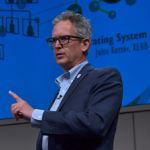Organizations everywhere are becoming more open—and more innovative, agile, and engaged as a result. But can we say the same of our educational organizations?
What if we could build classrooms, departments, or entire educational institutions on the same values that power the open source communities? What if we could infuse open principles—like transparency, inclusivity, adaptability, collaboration, and community—into reimagined educational organizations? How might that change the ways educators prepare students for life in an increasingly open world?
The next community-produced volume in the Open Organization book series will explore these questions. And you can contribute.
Participating is easy. Just follow three steps.
1. Learn about the book
First, familiarize yourself with the aim and scope of the project. The book's README is a great place to start.
You'll see that three principal sections comprise the book:
- Visions, chapters about the power, potential, and promise open principles hold for reimagining and reinventing modern educational organizations
- Case studies, examples of experimental and innovative initiatives aimed at making educational organizations more open
- Activities, step-by-step practices for introducing and scaling open principles in education
As per guidelines in this repository, all material included in this book is licensed via a Creative Commons license. So be sure to review those guidelines, too.
2. See what's in the works
Next, review the book's working table of contents to see what others have already agreed to contribute. Notice something missing? Great! Why not submit it?
3. Submit a chapter
To pitch your own contribution to this book, you can open an issue in the project's repository and describe the contribution you'd like to make, and an editor will get in touch with you. Alternatively, you can submit your ideas using our handy form.
Initial chapter drafts are due May 31, 2019, so don't delay.









Comments are closed.